(This post would have been impossible without the invaluable help of David Tibet, aka Anok Pe)
My friend Hans Förster has recently published with Walter de Gruyter a volume that brings together a number of Coptic fragments on the Dormition of the Virgin.[1] Two out of the four fragments in this book are edited for the first time in a modern language. In addition to the edition and the German translation of the material, the author has prepared an erudite commentary on each individual fragment.
The four fragments, all copied on parchment, are as follows: 1) a folio from the collection of Archduke Rainer, now to be found in the Austrian National Library in Vienna; 2) two leaves from the National Library in Paris; these belong to the same codex; 3) a fragment in Cambridge University Library. The photographic plates of each item are found at the end of the volume.
In this post, firstly I shall talk briefly about the two Parisian leaves and I will comment on their identification. Secondly, I will deal with the Vienna fragment, indicating that two other leaves, which very likely belong to the one and the same text about the Virgin, can be found in other collections of Coptic manuscripts. I hope this brief report will be of use to those interested in Eastern traditions concerning the Dormition of Mary and that they will be properly studied in the future.
The Paris Fragments
The two Paris fragments edited by my friend bear the inventory numbers BnF Copte 12917, ff. 28-29. A French translation of these leaves was published in 1903 by Eugène Revillout in an issue of the Journal Asiatique.[2] However, Revillout’s translation is of little use today. It is not only that it is defective on many points, but also that the French scholar did not even indicate which fragments he translated! Förster’s edition has been therefore necessary and is most welcomed.
The two fragments are consecutive and the scribe paginated them only on the verso, with even numbering. It appears thus that they were pages [41]-[44] of the codex from which they had been torn. The text describes a scene in which Jesus, the apostles and Mary’s accompanying maidens gathered around her death-bed. This episode is abundantly represented in iconography.
 Christ sits by his mother’s bedside, he kisses her and then blesses different parts of her body. Mary’s Dormition is said to occur on 21 Tobe, the standard date of the dormitio in the Coptic sources.
Christ sits by his mother’s bedside, he kisses her and then blesses different parts of her body. Mary’s Dormition is said to occur on 21 Tobe, the standard date of the dormitio in the Coptic sources.
There is just one thing which I have to add to Hans’ edition of the Paris fragments – namely that the text has been already identified by Enzo Lucchesi as belonging to a homily on the Dormition of Mary attributed to Evodius of Rome (CANT 133; clavis coptica 0151).[3] I have already spoken previosuly on this blog about this fictional character. A “short” version of the homily on the Dormition of the Virgin attributed to Evodius was translated by Stephen Shoemaker in Analecta Bollandiana,[4] but the Paris fragments do not parallel it. The reason is that they seem to belong to a different “long” version of the text, which is still unpublished, but which can be recovered from various fragments of Coptic manuscripts, also still mostly unpublished.[5] A full directory of the Coptic (Sahidic and Bohairic) fragments of pseudo-Evodius sermon on the Dormition still has to be made.
The Vienna fragment
The Vienna fragment published by Förster is recorded under the inventory number K 7589 in the collection of the Austrian National Library. The original pagination is partially damaged, but I think that the number 100 is still relatively visible on the upper left corner of the verso, whereas on the recto it seems safe to restore the page number to 9[9]. The following picture is taken from Hans Förster’s edition:
 The text narrates events which supposedly took place on the evening of 20 Tobe, i.e. on the eve of Mary’s death. The text begins by saying that Mary’s life span was 60 years. After Christ’s Ascension, she accompanied the apostles to preach the Gospel. The apostles are surrounding the bed of Mary, whose death is approaching. Suddenly, Christ descends from heaven accompanied by an army of angels. The text breaks off at this point. According to Förster’s hypothesis, the text must be dated back to the second century A.D. and belongs to a lost Apocalypse of Mary which was written in a non-Gnostic community. I will come back on this issue in the last paragraph of this post.
The text narrates events which supposedly took place on the evening of 20 Tobe, i.e. on the eve of Mary’s death. The text begins by saying that Mary’s life span was 60 years. After Christ’s Ascension, she accompanied the apostles to preach the Gospel. The apostles are surrounding the bed of Mary, whose death is approaching. Suddenly, Christ descends from heaven accompanied by an army of angels. The text breaks off at this point. According to Förster’s hypothesis, the text must be dated back to the second century A.D. and belongs to a lost Apocalypse of Mary which was written in a non-Gnostic community. I will come back on this issue in the last paragraph of this post.
Through a fortuitous coincidence, I became aware that another fragment of the same codex, and text, is now in the State Library in Berlin. This new manuscript witness has the shelf mark MS orient. fol. 1350, f. 3 and was published almost 100 years ago by Gerhard Hoehne.[6] The paleographic inspection indicates that the Berlin fragment published by Hoehne and the Vienna fragment published by Förster indubitably belong to one and the same codex. As the Berlin leaf is paginated 103-104, it is evident that they were separated by only one leaf (paginated 101-102), which is either lost for good, or not as yet identified.
 Moreover, it seems that another fragment from Vienna, i.e. K 9220, belonged in its turn to the same writing and manuscript. Unfortunately, the third piece is damaged in the upper part so that the pagination did not survive. It is thus impossible to say whether it preceded the previous two fragments, or whether it came after them.
Moreover, it seems that another fragment from Vienna, i.e. K 9220, belonged in its turn to the same writing and manuscript. Unfortunately, the third piece is damaged in the upper part so that the pagination did not survive. It is thus impossible to say whether it preceded the previous two fragments, or whether it came after them.
 Be that as it may, the content of the new fragments does not seem to confirm Förster’s hypothesis that Vienna K 7589 might belong to a second century Apocalypse of Mary. It suggest, rather, that the leaves came from a still unidentified sermon of the Dormition. Whatever its identity may have been, it still remains to be investigated. My only task here was to add to the directory of the identifiable fragments.
Be that as it may, the content of the new fragments does not seem to confirm Förster’s hypothesis that Vienna K 7589 might belong to a second century Apocalypse of Mary. It suggest, rather, that the leaves came from a still unidentified sermon of the Dormition. Whatever its identity may have been, it still remains to be investigated. My only task here was to add to the directory of the identifiable fragments.
[1] H. Förster, Transitus Mariae. Beiträge zur koptischen Überlieferung. Mit einen Edition von P. Vindob. K 7589, Cambridge Add 1876 8 und Paris BN Copte 12917 ff. 28 und 29 (GCS, 14. Neutestamentliche Apockryphen, 2; Berlin – New York: Walter de Gruyter, 2006).
[2] E. Revillout, “Lettre à M. le rédacteur du Journal Asiatique sur de nouveaux Évangiles apocryphes relatifs à la Vierge,” Journal Asiatique 10 (1903) 162-174.
[3] E. Lucchesi, “Un évangile apocryphe imaginaire,” Orientalia Lovaniensia Periodica 28 (1997) 167-178, at 174-175, note 9.
[4] S.J. Shoemaker, “The Sahidic Coptic Homily on the Dormition Attributed to Evodius of Rome. An Edition from Morgan MSS 596 & 598 with Translation,” Analecta Bollandiana 117 (1999) 241-283
[5] On the different recensions of pseudo-Evodius’ homily, see M. Sheridan, “A Homily on the Death of the Virgin Mary Attributed to Evodius of Rome,” in M. Immerzeel and J. van der Vliet (eds.), Coptic Studies on the Threshold of a New Millennium. Proceedings of the Seventh International Congress of Coptic Studies, Leiden 27 Aug.-2 Sept. 2000 vol. 1 (OLA, 133; Leuven etc.: Peeters, 2004) 393-406.
[6] G. Hoehne, “Drei koptisch-saidische Texte aus der Königlichen Bibliothek zu Berlin,” Zeitschrift für ägyptische Sprache 52 (1915) 119-128, at 126-128.









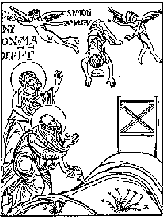




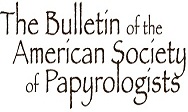
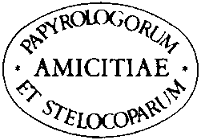
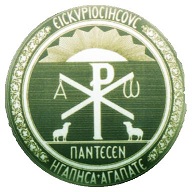





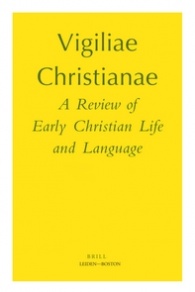






alin,im ACTIVIST Walter Angel,im a big fan of your work,the coptic traditions of the dormition of the virgin are also translated into spanish by gonzalo aranda perez,ciudad nueva: http://www.ciudadnueva.com/new/catalogo/patristica03.asp?id=19329
Thanks. I know Fr. Aranda Perez’s work.